Welcome back this week we are very excited to share with you rare antique prints and maps documenting some of the voyages and discoveries of Captain James Cook. Cook was one of the first explorers of the Pacific Ocean and he chronicled three voyages of discovery by illustrating many of the aboriginals and scenes of the times.
This is indeed a unique and unusual “back to the future” adventure for us, thanks to his charter and observations and the collection at Prints Old and Rare. The first step in the training of a biologist is the power”observation.” I can remember my first field trip with professor Peter Young, who made us all sit on a log and write down everything we observed during the course of an hour. Cook’s observations during the three long voyages, are indeed stunning, incredibly insightful and encompass years of observations!
The map featured this week is a projection of the Northern Hemisphere on the Plane of the Horizon of London, a large copper engraved map by Edinburgh cartographer John Thompson, 1816. The routes of Cook’s voyages 1772-1776 are noted along with the Bherings Island of Kamachatka Peninsula, this map and unusual projection covers all of North America, Europe, Asia, Africa and parts of South America. Our World Map Page!
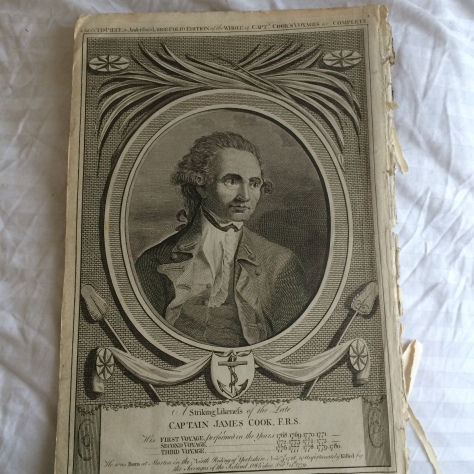
Above is the cover of Anderfon’s large folio edition of the Whole of Captain Cook’s voyages where many of the images we will enjoy came from. As you can see below, discovery was not for the meek and lasted years; interestingly during the American Revolutionary War, Cook’s ships were given safe passage because they were ships of exploration. You can thank our in-house historian, Bill Hall for that one!
Cooks Voyages
- First Voyage: 1768, 1769, 1770, 1771
- Second Voyage: 1772, 1775, 1771, 1775
- Third Voyage: 1776, 1777, 1778, 1779, 1780
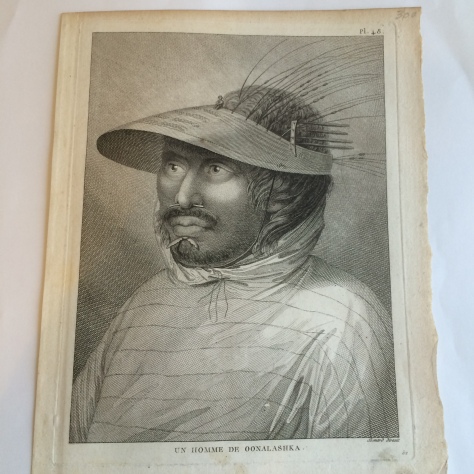
Just imagine what Cook and his men were experiencing as they began to explore the Pacific ocean, the next series of images, including the one above, are detailed copper engraved etchings of aboriginals they encountered along the way. Amazing!
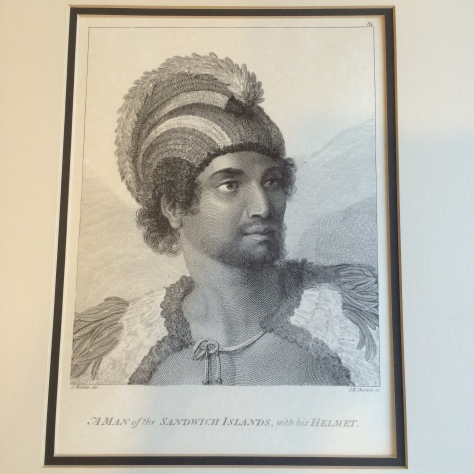
During Cook’s visit to the Sandwich Islands, (known now as the Hawaiian Islands) the explorers made significant contact with aboriginals and there are many very interesting engravings of them like the one above. The engravings below represent aboriginal men they encountered on Prince William Sound and the Kamtschatka peninsula in the Northeast Pacific Ocean. Remember that these aboriginals enjoyed an elaborate lifestyle because of the abundance of food and resources the rivers, inlets, clam flats and sea provided. Unlike many American Indian tribes that wandered the plains in search of food, these tribes spent less than one third of their time finding food. Most of their time was spent on elaborate ceremonies like the “Potlatch.”
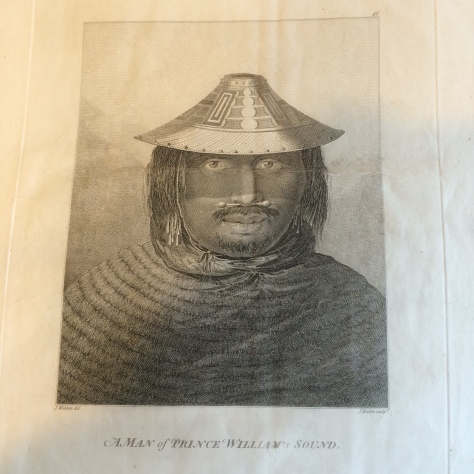
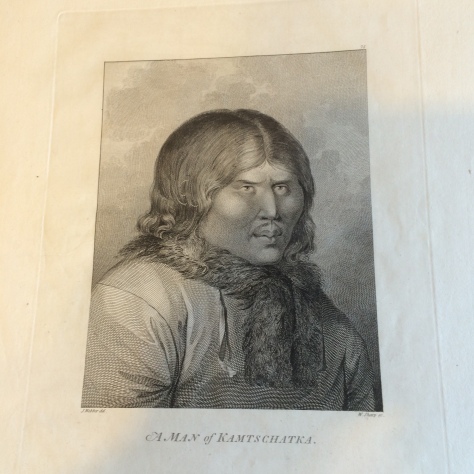
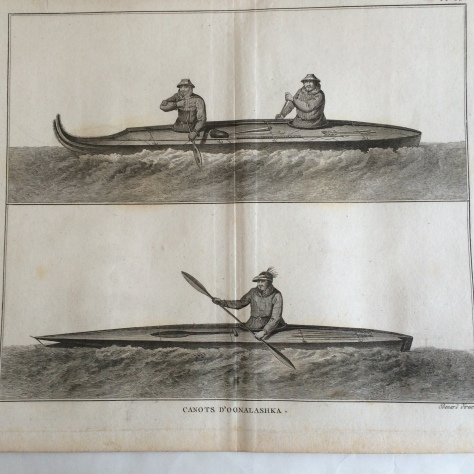
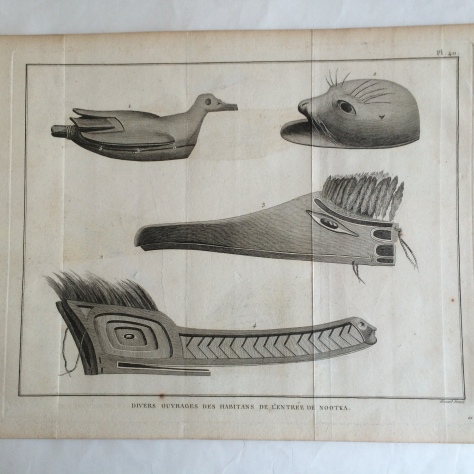 Nootka Sound Articles Cook Pages!
Nootka Sound Articles Cook Pages!
Native Caps Cook Pages!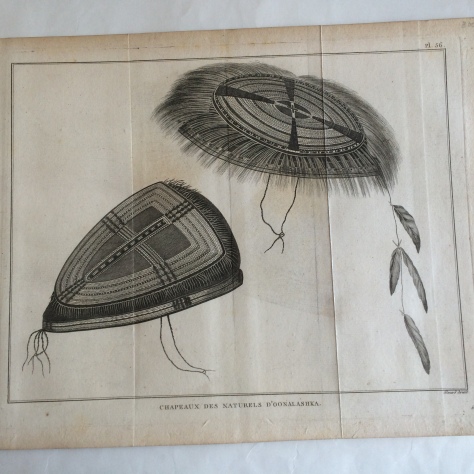
The engravings above of kayaks, headpieces probably used as decoys or to sneak up on prey and the shields just above provide wonderful insights into how aboriginals survived without a capitalist system. They were one with nature, depended on her bounty and respected nature and the earth in more ways than our society ever will.
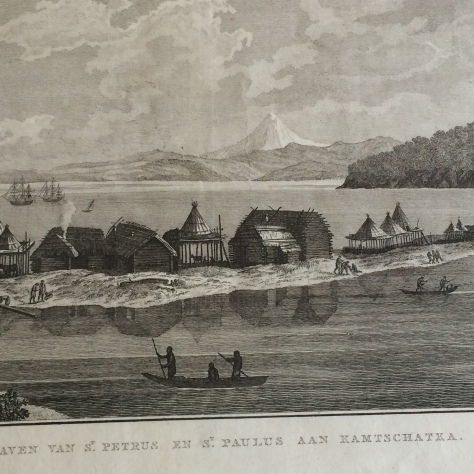
Cook an excellent navigator, was also known for his detailed maps during his days at war, and his cartographers created very detailed maps of their discoveries like Macao below.
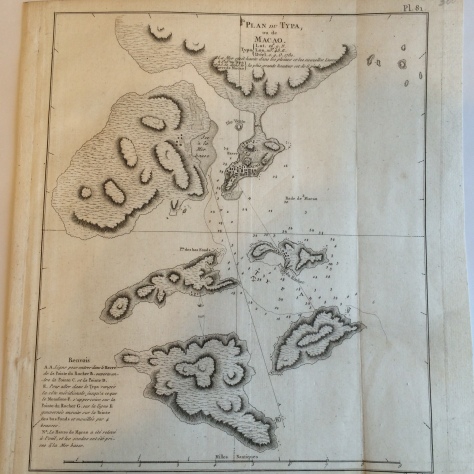
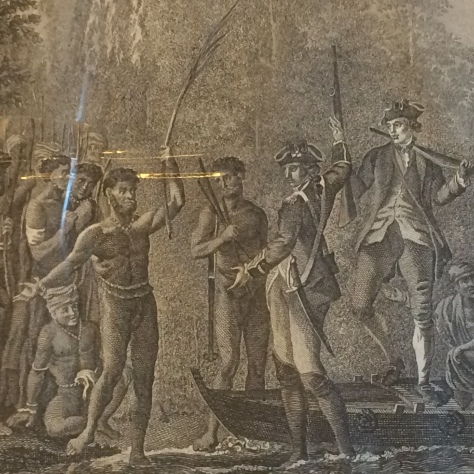
The image above is another engraving from Anderfon’s large folio edition and shows Cook and his men interacting with aboriginals on the island of New Hebrides, now Vanuatu.
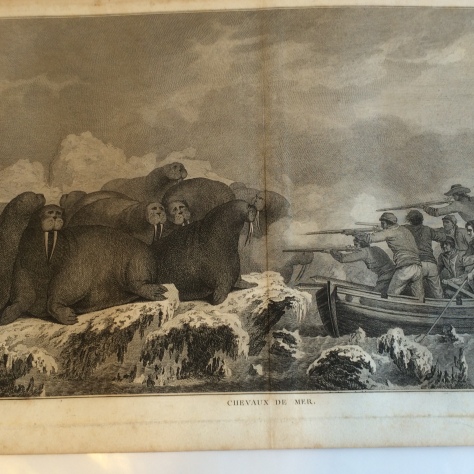
What must it have been like to encounter a group of large walrus like depicted in this engraving? No doubt they learned from the natives that this was also great food, and amazing source for ivory and lamp oil for their ships. Whale oil was for many years the primary source of fuel for lamps and small stoves, especially on sailing vessels.
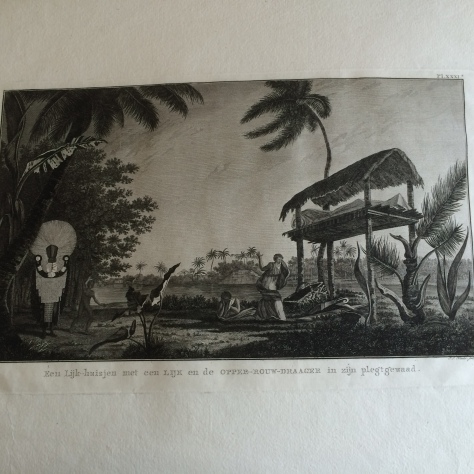
Above is what appears to be a burial ceremony on Pacific Island, probably one of the Sandwich Islands. Unfortunately for Cook he was killed on the Big Island of Hawaii after going to shore to teach the natives a lesson. The natives had been stealing nails from his ships for the iron, and they were starting to fall apart, so Cook went ashore to punish them and it was the beginning of the end for him.
Captain James Cook, F.R.S. was born in Yorkshire November 3, 1728 and was “killed by savages on the island of Owhyee Feb 14, 1779.”
According to Wikipedia, his ship the Endeavour was largely forgotten after her epic voyage, spent the next three years sailing to and from the Falkland Islands. Sold into private hands in 1775, and later renamed as Lord Sandwich, she was hired as a British troop transport during the American War of Independence, Endeavour was scuttled in a blockade of Narragansett Bay, Rhode Island in 1778. As of 2016 her wreck had not been precisely located but was thought to be one of a cluster of five in Newport Harbor, and searching continues. Relics, including six of her cannon and an anchor, are displayed at maritime museums worldwide. The US Space Shuttle Endeavour is named after the ship and she is depicted on the New Zealand fifty cent coin.
Cook was no doubt a great leader and his voyages of discovery must have tested the courage and will of many. We hope that you have enjoyed the wonderful observations engraved for history by the famous Captain Cook!
Type in code B13 in the comments section for a 10% discount on any Map or Print!
